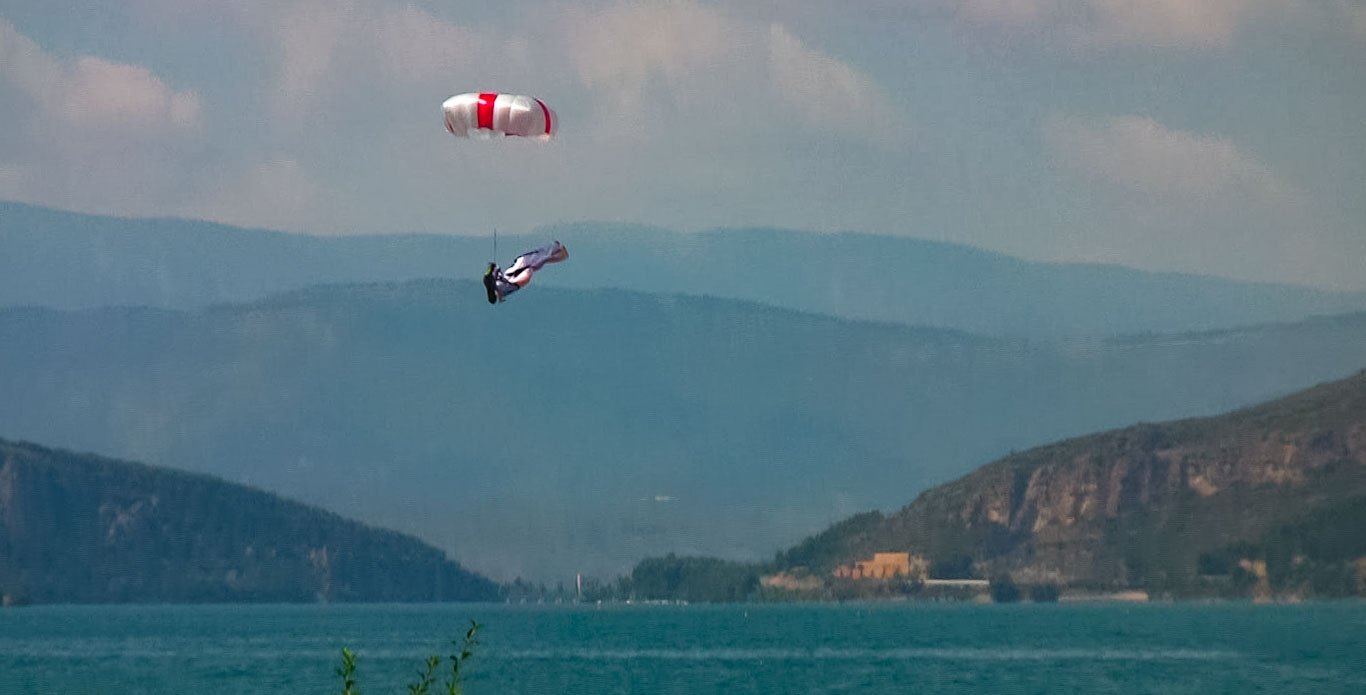The emergency parachute or reserve is a fundamental part of our flying equipment, it’s a “second chance” when things get weird up there, and that’s why we should pay special attention to both its correct maintenance and use.
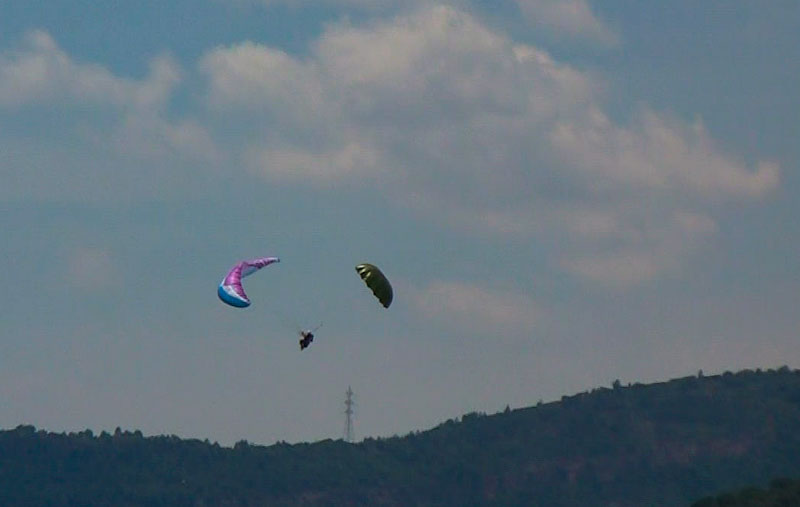
The parachute is also the most “forgotten part” of our equipment and there are lots of street talk, unfounded rumors, and beliefs based on commentaries heard in pubs…
Please allow me to shed some light on the subject!
For me, according to my over 15 years of experience as an SIV instructor and test pilot, the most serious problems related to the parachute are 2:
– Parachute installed wrong: We can have the best parachute in the world but if it’s installed wrong, either by us or someone else, it simply is of no use. This is a more serious subject than it seems because many pilots end up putting their lives in the hands of a friend or a party organized to air/install parachutes, the very thing that’s supposed to save your life…!
– Inadequate size: The maximum certified weight is the theoretical weight measured in a standard atmosphere (15ºC at sea level). But that number is hardly ever real, so a correction mass/air formula is applied to learn the actual weight in the moment and place of the certification. Obviously, this weight is always inferior to the certified weight, which means that parachutes are certified with less weight than the one registered in the label.
Therefore, in favor of our best health, adding a +20-30% margin to that weight in the label is best. When your weight is at your parachute’s maximum, unless you are at sea level and with a maximum temperature of 15º C, you can be sure that you’ll be crossing the border of the certification limit. In other words, for a TWF (total weight in flight) of 100 kg, it is advisable to choose a 120-130 kg parachute. Applying this formula for heights above 1000m and 30º C may also result in multiple surprises…
The parameters that are usually considered at the time of choosing a parachute are several and may lead to confusion:
Round, square, pentagonal, triangular, Rogallo?
We are currently experiencing a geometry feast, we have every geometrical shape to choose from!
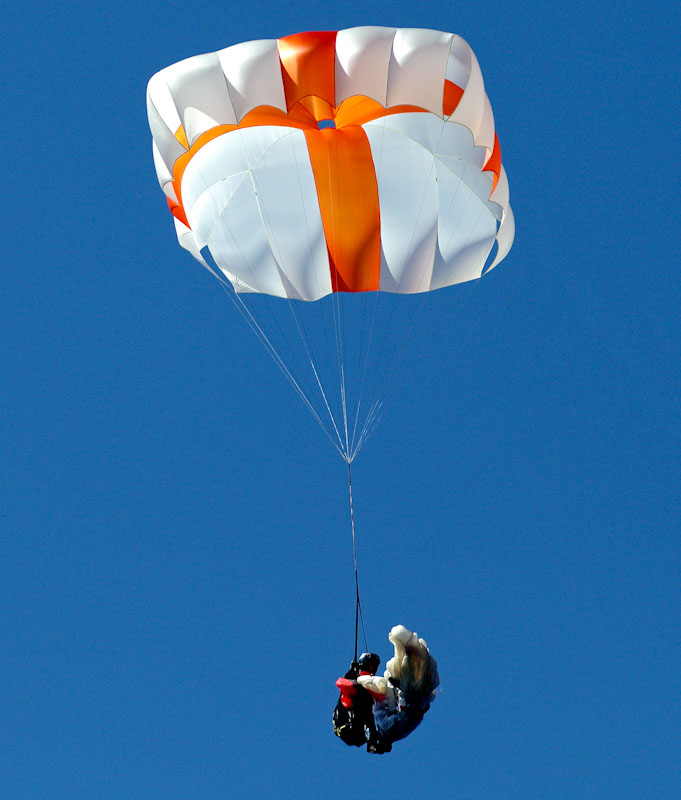
The shape of the parachute establishes its efficiency and stability, two VERY crucial factors.
The GREATEST problem of the paraglider emergency parachute is that it is used in unison with the glider, and the glider hinders the right functioning of the parachute, destabilizing it and provoking the feared mirror effect. This aspect is not contemplated by the certification.
–Round: Created in the XIX century, initially they were manufactured in silk. The nylon version was invented during WW II. This is a primitive and quite inefficient design, and as a consequence, it is very unstable, heavy and bulky. It is the one that takes the longest to open, it descends quicker and tends more to the mirror effect. Not your best option nowadays.
–Square: It is the evolution of the round one, with improved efficiency and stability which makes it lighter, more compact and with a lesser trend to the mirror effect. All square parachutes have a slight horizontal speed, which is used by manufacturers to provide them with a steering system (Charly, Kortel).
–Pentagonal, octagonal, etc.: They try to improve the behavior of the round parachute, but they end up getting too close to it… and its characteristics.
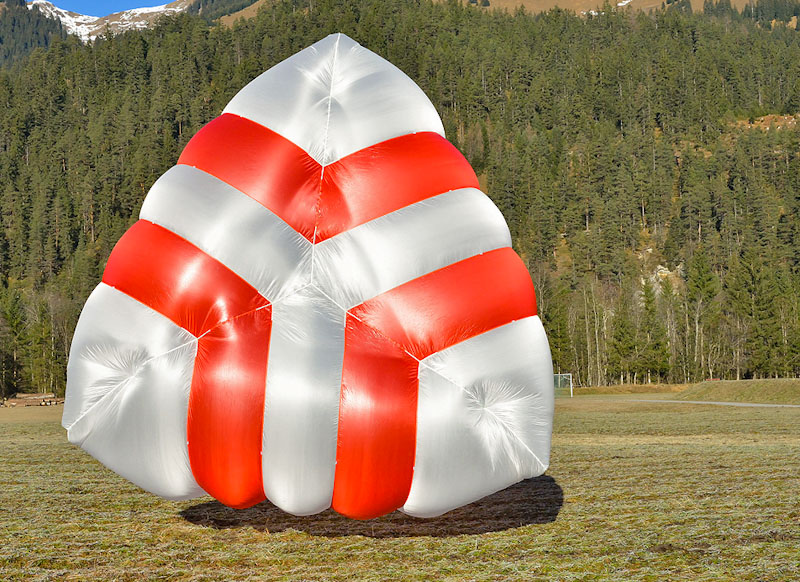
–Triangular: Considerably more efficient, considerably more stable and as a result, lighter and more compact. There is a steerable version which does NOT take advantage of the inherent horizontal speed because it does not have it. In other words, the triangular design does not have horizontal speed by design. These are the most evolved parachutes to date. There is only one manufacturer: X-Dream Fly. The X-Triangle is steerable and the X-Two is non-steerable.
–Rogallo: This is a separate case because it is actually a wing, not a parachute, though it is used as such. It is the most efficient parachute, with the least descent rate, also the most stable one (less tendency to the mirror effect), all of which holds true provided one single condition: it has to be big. A minimum of 37m2; any size below that, they are worse than the rest of the parachutes.
Large or Small?
Large. Without a doubt. The larger the rescue, the lesser the descent rate, the lesser the trend to the mirror effect, and we make sure that we are within the certification range.
There are people who believe, and some sales reps also advise (which is truly worse), a smaller parachute for it to open faster, have less drift and be easier to neutralize.
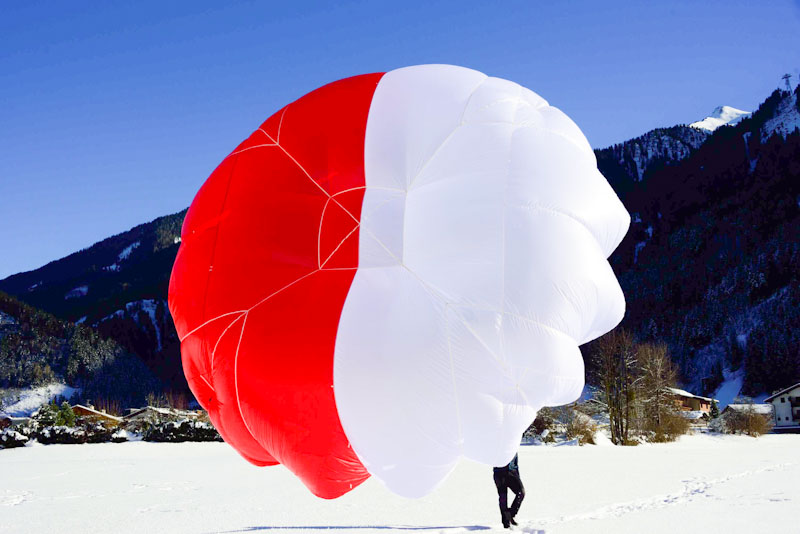
Size doesn’t truly have an effect on the opening speed.
The drift is the same… it depends on the intensity of the wind, not the descent rate. And of course, the higher the descent rate, the more chances we have of getting hurt!
Neutralize it… does not really depend on the parachute’s surface area. All parachutes are hard to disable. It depends on the type of connection to the harness and how far from the lines we end up being.
Opening speed
The opening speed of a parachute depends on several factors:
- Relative speed: There’s a complete difference between deploying the reserve during a deep stall of the glider (it opens very slowly) than in a spin (quick opening, though, depending on the spin, there might be more chances of the reserve getting tangled with the glider).
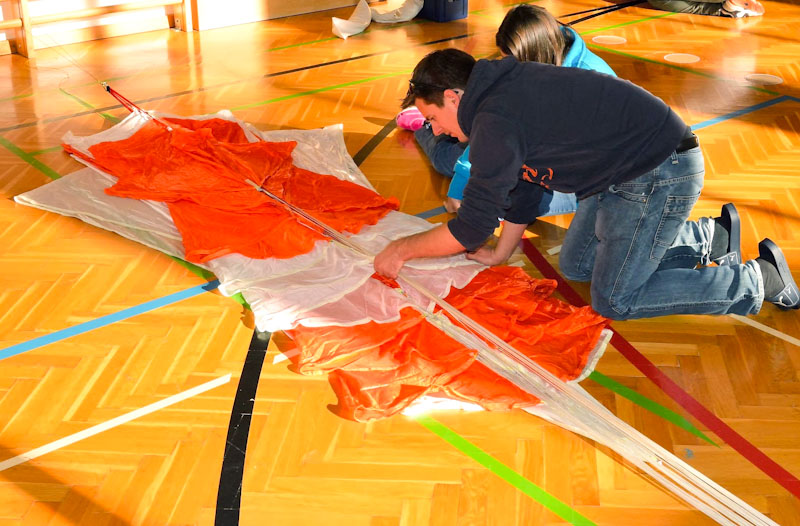
- Revision period: If you want a fast opening parachute, air it at least once a year.
- Design: The Rogallo type parachute opens quicker than any other design. The PDA (round) is the slowest to open.
- Repacking: It affects the opening time, and packing it differently from the instructions published by the manufacturer should NEVER BE DONE. This is the packing that has been approved in the certification. If we repack it in a different way we end up with a non-certified rescue parachute.
- Size: This is the factor that least affects the opening speed of the reserve. Yet, oddly enough, the most relevant factor heard in street talk. In any case, a small parachute opens a bit quicker than a larger one because there is less fabric involved, and not because it carries more weight… And yes, a small parachute guarantees a higher descent rate and more tendency to the mirror effect.
The paraglider and the parachute
Well… they don’t get along well. In fact, they have a horrible relationship.
The best we can do is to get rid of the paraglider. Literally speaking: Quickouts or safety knife. Or learning to disable it whenever possible, which isn’t always the case.
Rescue parachutes are certified WITHOUT the paraglider. So “nobody knows” how they behave linked to a paraglider. If what you want is the certified performance, now you know: deploy at sea level, 15ºC, and get rid of the glider.
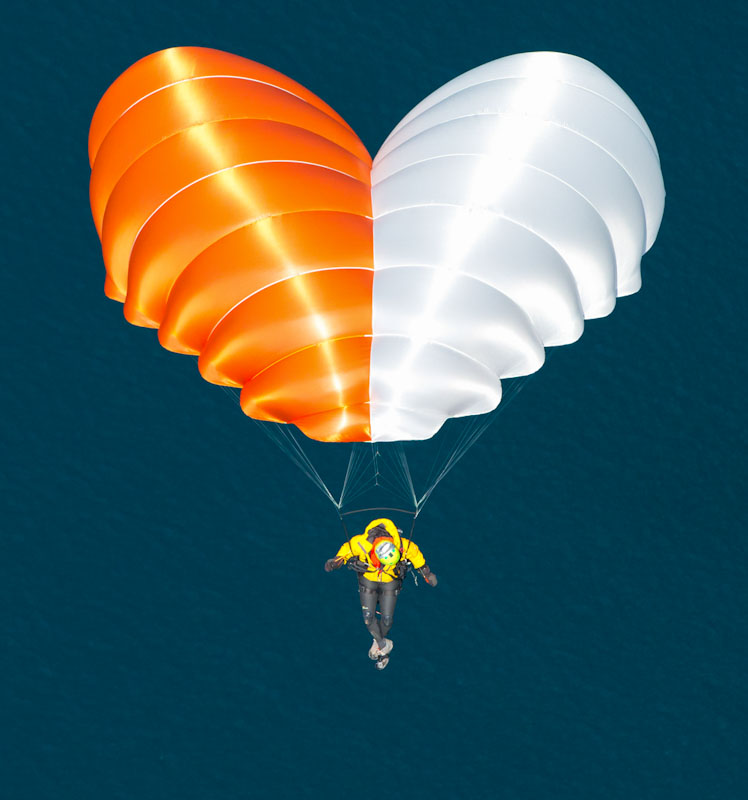
Oh! And disabling the paraglider is more important the less stable the parachute is, which means that it is very important under a round parachute and less so under a Rogallo or a triangular one.
How is it used?
Like with everything else, there is the right way to use it well and it must be learnt. The best recommendation is to take an SIV course, where you will learn how to not have to use it and, in case you need to, use it well: When and how to deploy it, disabling the wing, etc… All that, above water and in a safe environment for the pilot.
Ziplines are useless to learn how to use an emergency parachute. For instance, you can’t practice the most important part of the event: disabling the glider. Besides, you can damage the parachute, in particular, if it is a steerable or square one.
Can a parachute get wet?
Yes. It can get wet.
Recently, an article with commercial purposes from Nova manufacturer implied that a parachute should never get wet because this made the parachute useless. This was to promote that they had recently started manufacturing reserve parachutes with a waterproof fabric. To make their point, they provided arguments that were hard to prove, and in a very alarming tone, one that is far from the reality of things.
It is true that a “normal” fabric that isn’t waterproof and that absorbs humidity can be damaged by it and obviously if it gets wet. Anyhow, even with this kind of fabric, a reserve can get wet, no problem, many times during its lifespan, without sensibly affecting its performance. Getting the parachute wet with fresh water (a completely different story with seawater) during an SIV course implies a couple of minutes of water that dries out quickly. You can take one SIV course a year throughout the life span of the parachute without affecting its normal performance.
What is truly dangerous is not learning how to use the rescue parachute correctly by practicing deployment over water.
– J. M.
If Nova’s alarming statements were real, all acro pilots would be dead by now, since during competitions they regularly get their parachutes wet. And they do so hundreds of times throughout their parachute’s life span…
Until not so long ago, there were no 100% waterproof materials and nobody used them, obviously neither did Nova. But brands like X-Dream Fly and Airdesign Gliders have been using waterproof materials since they came out, long before Nova by the way.
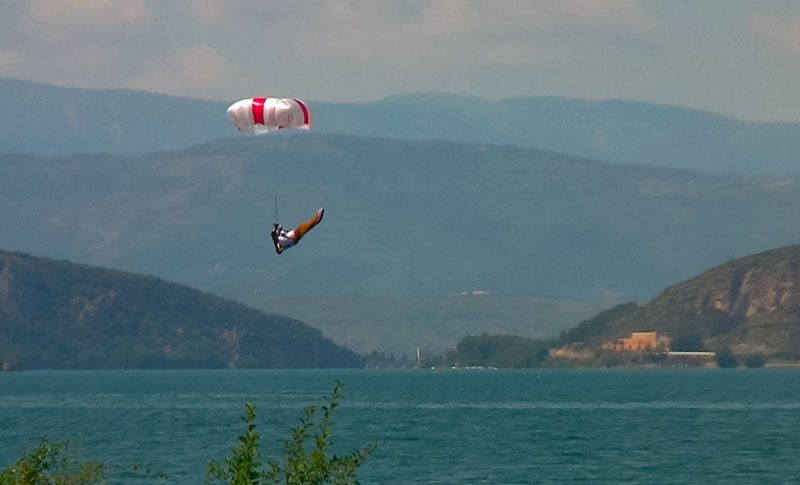
The waterproof fabric is used basically to avoid the aging problems provoked by humidity and temperature, the worst enemies for our beloved parachutes and paragliders.
Rescue chute Test – Certification
There are two types of tests performed to get the EN certification of a parachute: load test and flight test. Both are repeated twice and, in the case of the load test, it is mandatory to repeat it with the same parachute.
The load test accepts 40m/s (115 km/h) or 60 m/s (176 km/h), as specified in the certification label.
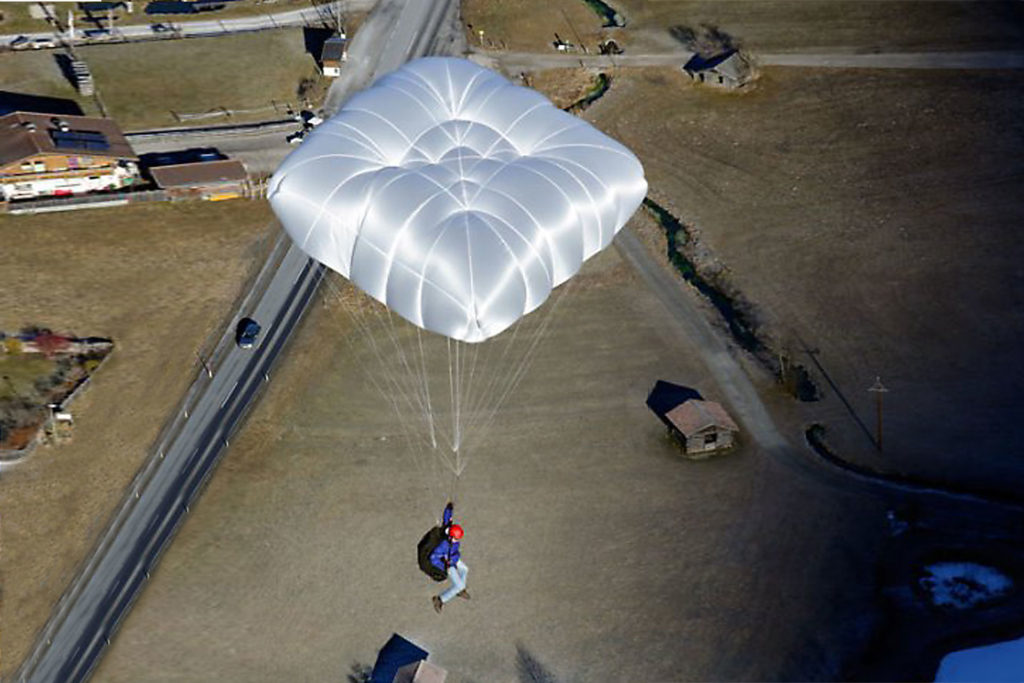
The flying test is useful to prove the pendulum stability and the descent rate. It is usually conducted with two different parachutes for a practical reason: the test is usually performed by a test pilot who lands in the water, and drying the parachute takes time (up to 2 days). Simple. In contrast with Nova’s statements, it is not due to a degrading issue but a matter of drying time.
Like we’ve said before, the maximum load is always adapted to the conditions at the time of the test, and the real load is always inferior to the certified one. Plus, all the tests are carried out without the paraglider, therefore the descent rate is always the optimum one.
European Norm warning: using a container different from the original may cause different results and even failures. This is starting to be a problem since harness manufacturers have started fixing the handles to their harnesses rescue containers which forces the substitution of the parachute’s original container when installing it. It is a pity to be forced to use a different container than the original made by brands like X-Dream Fly, who have done such a great job improving them. Now some harnesses only admit their own containers with the fixed handles, and they are all worse than the original.
Important factors when choosing a parachute.
In brief, this is what should be considered when choosing a new parachute:
– Size: Calculate the maximum weight to be 20–30% above the Total Weight in Flight.
– Steerable?: Indispensable to avoid a dangerous landing, such as electric lines, roads, houses, etc. Completely recommendable. There are 2 options: X-Dream Fly X-Triangle or Rogallo type, like the X-Curve.
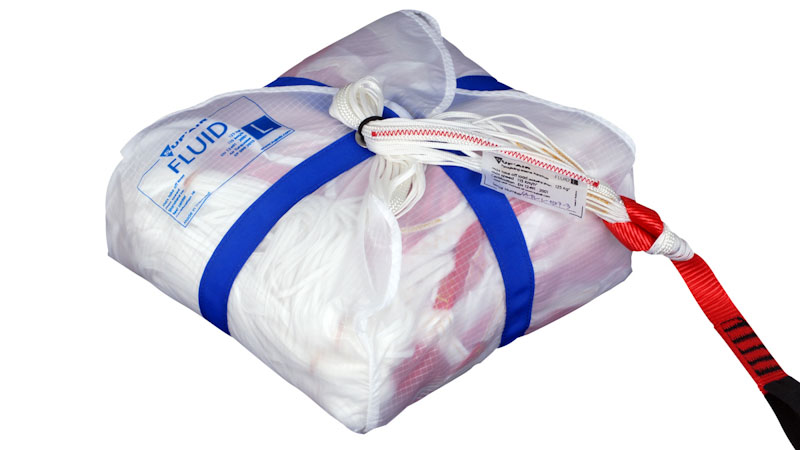
– Certification: It is hard to believe but, unfortunately, not all the reserve parachutes available in the market are certified. A certified one is best. And by the EN norm, since LTF has an allowed maximum descent rate of 6.8 m/s, which is outrageous.
– Container: With line compartment is best, to avoid cravats and the degrading of the materials.
– Construction materials: Ever better materials are being made. Currently, the best materials are light, durable and waterproof. This has allowed manufacturers, like X-Dream Fly, to prolong the life span of their parachutes up to 15 years.
– Weight and volume: The lighter and more compact the better. If weight and volume are not a problem for you, choose a larger size and you will count with a parachute that will deliver a better performance.
– MAINTENANCE: If you want your parachute to work and open quickly, schedule your checks with a professional once a year.
And remember: Only a professional can install your parachute correctly, otherwise, all the above mentioned is useless.
It is completely unadvisable to check your parachute at crowded repacking parties or events…
+Info: www.entrenuvols.com


